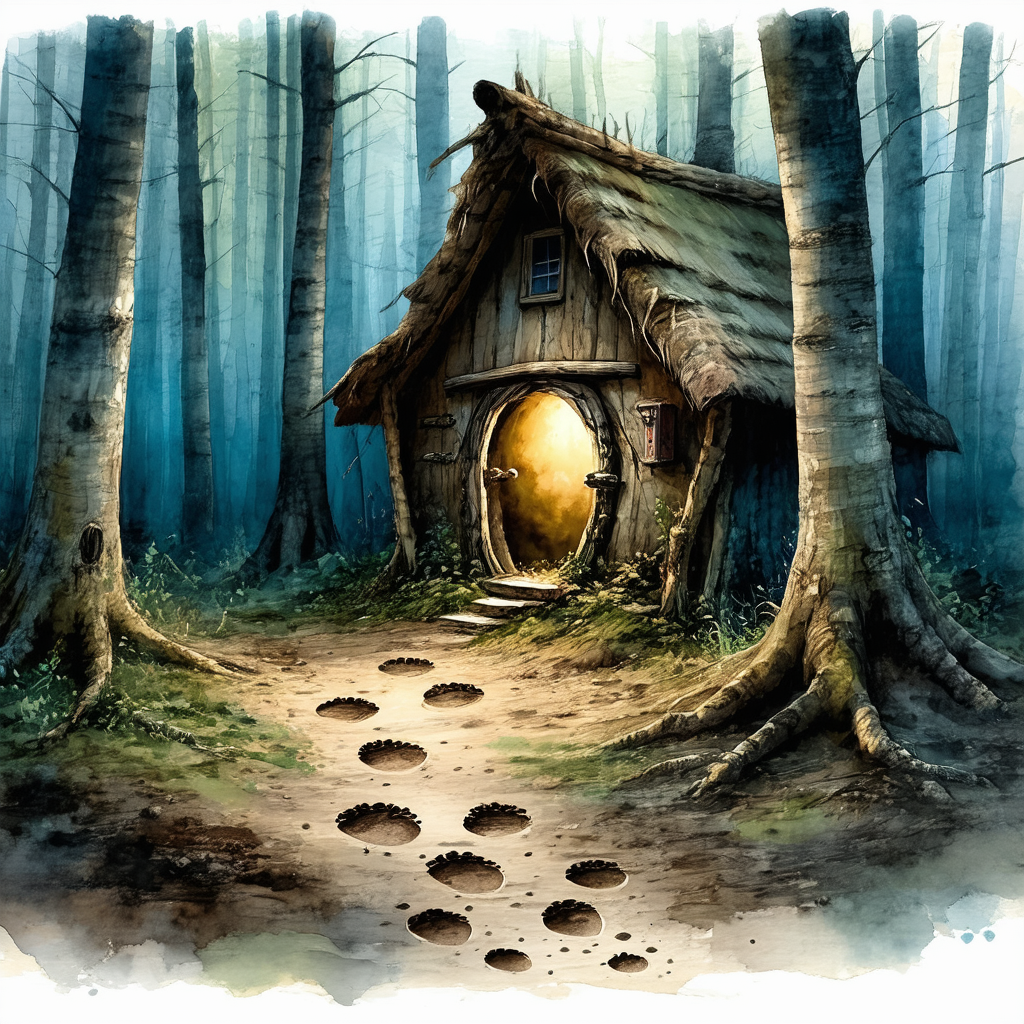Few figures in folklore are as fascinating and contradictory as Baba Yaga, the mysterious witch of Slavic legend. Dwelling in a hut that stands on chicken legs and riding through the skies in a giant mortar, Baba Yaga is both feared and revered, embodying a dual nature that has captivated storytellers and scholars alike. Known for her wisdom and cruelty, her role as both a helper and a villain makes her a powerful figure of transformation, life, and death. In this exploration of Baba Yaga, we’ll trace her origins, examine her symbolism, and uncover the cultural significance of her many stories.
Origins of Baba Yaga in Slavic Folklore
Baba Yaga’s roots stretch deep into Russian and Slavic mythology, where she is depicted as an old, often grotesque woman with supernatural powers. She is typically found in the remote wilderness, living alone in her forest hut, which stands on chicken legs and can move of its own accord. Legends say that Baba Yaga guards the boundary between the world of the living and the dead, serving as a liminal figure who represents both the unknown and the passage from life to death.
Her name itself offers a clue to her nature. “Baba” is a Slavic term that can mean “old woman” or “grandmother,” while “Yaga” is believed to derive from old Slavic words for “wicked” or “pain.” Together, her name could be interpreted as “wicked grandmother” or “hag.” According to Dr. Valeria Ivanovna, a Slavic folklore specialist, Baba Yaga’s duality as both a grandmother figure and a malevolent entity speaks to the complex nature of feminine archetypes in Slavic tradition (Ivanovna, Slavic Witchcraft and Folklore, 1999).
Baba Yaga’s Appearance and Her Iconic Hut
Descriptions of Baba Yaga vary across stories, but certain features remain consistent. She is typically portrayed as an old, haggard woman with iron teeth and a hooked nose. She flies through the forest in a mortar (often wielding a pestle) and sweeps away her tracks with a broom. This unique imagery highlights her otherworldly nature and her association with both the mundane and the magical.
Her hut, which stands on chicken legs and moves according to her will, is one of the most iconic elements of her character. The hut is often surrounded by a fence made of bones, reinforcing her association with death and the macabre. Some scholars interpret the chicken-legged hut as a symbol of her connection to the spirit world, suggesting that its mobility represents her ability to travel between realms. Dr. Alexander Petrova, a folklorist, notes that the hut may reflect ancient shamanistic practices, where structures were elevated on stilts to signify a space separate from the human world (Petrova, Myths of the Russian Forest, 2003).
The Symbolism of Baba Yaga: Nature, Wisdom, and Transformation
Baba Yaga embodies several potent symbols in Slavic folklore, reflecting the mysteries of nature, feminine power, and the transformative cycle of life and death.
Baba Yaga as a Symbol of Nature’s Duality: Baba Yaga is deeply tied to the forest, a space of mystery, danger, and potential. In Slavic culture, the forest is a place of the unknown, where rules of civilization no longer apply. As a creature of the forest, Baba Yaga embodies the untamed forces of nature, which can be both nurturing and destructive. She is known to test those who come to her for help, often placing impossible tasks before them. This characteristic reflects the belief that nature provides, but only to those who respect and understand its rules.
Wisdom and Initiation: In many stories, Baba Yaga plays the role of a wise crone who guides heroes and heroines through a rite of passage. Her guidance is rarely gentle; she challenges those who seek her help, forcing them to confront their fears and prove their worth. In this way, Baba Yaga acts as a mentor in disguise, teaching important lessons about resilience, courage, and resourcefulness. Russian historian Marina Azarova suggests that Baba Yaga’s tests are a form of initiation, symbolizing the trials one must endure to gain wisdom and insight (Azarova, Women of Slavic Mythology, 2005).
Life, Death, and Rebirth: As a figure who lives at the border of the human and spirit worlds, Baba Yaga is closely associated with death and rebirth. In some stories, she consumes her visitors only to later resurrect them, symbolizing the transformative power of death. In this sense, Baba Yaga can be seen as a guardian of the cycle of life and a force that facilitates transformation and renewal. Her role as a death figure is not inherently evil; rather, she represents the natural progression from life to death and back to life, a reminder that endings can also be beginnings
Baba Yaga in Popular Culture and Global Influence
Over time, Baba Yaga has transcended Slavic folklore to become a global icon. Her unique traits and complex character have inspired portrayals in literature, film, and art. In some modern adaptations, such as Hellboy and John Wick, Baba Yaga is depicted as a dark, enigmatic figure of power. However, these portrayals often simplify her character, reducing her role to that of a villain or a mere monster.
In other works, like the novel Vassa in the Night by Sarah Porter, Baba Yaga is portrayed with greater complexity, echoing her dual role as both mentor and menace. This approach aligns more closely with traditional Slavic tales, where Baba Yaga is neither wholly evil nor entirely benevolent. As her popularity grows, Baba Yaga continues to be reinterpreted, yet her core remains unchanged—a powerful, unpredictable force that defies easy categorization.
Final Thoughts: The Legacy of Baba Yaga
Baba Yaga’s enduring appeal lies in her embodiment of life’s dualities. She is a figure who can heal and harm, help and hinder, terrify and teach. Through her, we glimpse the wisdom of the natural world, the power of transformation, and the importance of facing our fears. Baba Yaga reminds us that growth often comes through hardship, that nature is both beautiful and dangerous, and that death is a natural part of life’s cycle.
In a world that often seeks clear boundaries between good and evil, Baba Yaga stands as a reminder that the most powerful figures defy categorization. She endures as a symbol of feminine power, nature’s mystery, and the wisdom that lies just beyond our understanding. As long as her stories are told, Baba Yaga will continue to haunt and inspire, a legend as wild and untamed as the forest itself.
Sources:
- Ivanovna, V. Slavic Witchcraft and Folklore, 1999.
- Petrova, A. Myths of the Russian Forest, 2003.
- Azarova, M. Women of Slavic Mythology, 2005.


